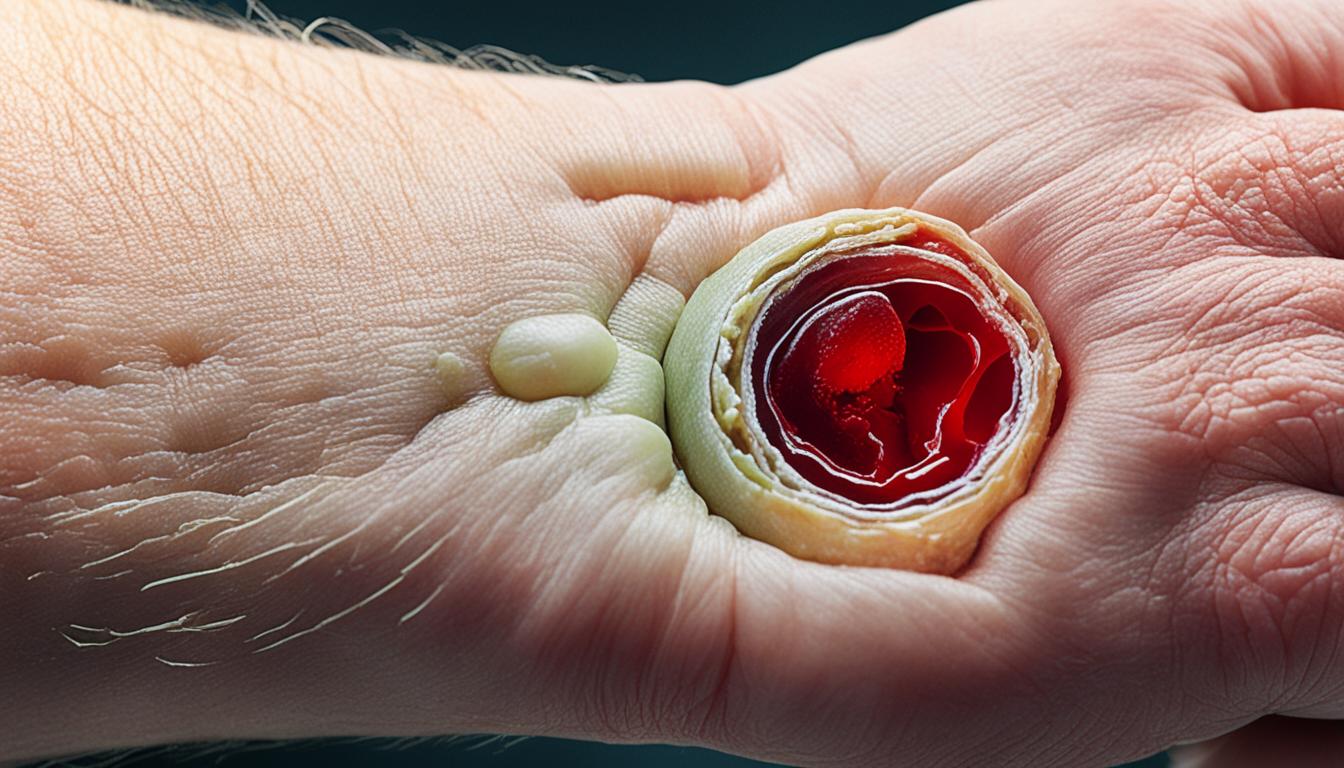Ganglion cysts are lumps filled with a jelly-like fluid. They often appear in the hand and wrist but can also be found in the knee and foot. While many ganglion cysts don’t cause issues, some can lead to pain, tenderness, and weaken the area. People might not like how they look either.
The exact cause of these cysts is not fully clear. However, doctors think they come from the joint’s soft tissue because of repeated tiny injuries. They also believe the wear and tear of the joint’s connective tissue might play a role. These cysts are the most common type of soft-tissue lump in the hand and wrist, especially among women aged 20 to 50.
To diagnose a ganglion cyst, a doctor will often check the affected area. They might also use X-rays or an MRI to make sure it’s not something else. These help with planning any needed surgery. Treatments range from just watching the cyst, to using a brace or draining the fluid, and sometimes, removing it with surgery.
Key Takeaways:
- Ganglion cysts are common lumps filled with a jelly-like fluid.
- They are most often seen in the hand and wrist but can appear in other joints too.
- While they might not cause any trouble, they can lead to pain, tenderness, and weakness.
- Treatments include leaving it alone, using a brace, draining the fluid, or surgery, which usually solves the problem.
- To find out if it’s a ganglion cyst, the doctor will examine the area and might use imaging tests.
Ganglion Cyst Treatment Options
Ganglion cysts are manageable, with the treatment method based on the symptoms’ severity and their place. There are non-surgical and surgical choices, varying from conservative approaches to cutting out the cyst.
Observation
Ganglion cysts that don’t hurt or bother can be left alone. Often, these cysts will go away without needing any medical help.
Non-Surgical Treatments
For mild to moderate symptoms, doctors usually suggest non-surgery. Using a splint can reduce the inflammation. This way, the cyst may get smaller over time. This way is very good for wrist ganglion cysts.
Aspiration
Aspiration is when a doctor uses a needle to drain the cyst’s fluid. It’s done for big cysts that cause pain or limit movement. But, this method can make the cyst come back more often than with surgery.
Surgical Removal
When cysts keep coming back, surgery might be needed. The goal is to take out the cyst without hurting nearby areas. After surgery, the cyst might come back about 15 to 20% of the time.
Summary: The main treatments for ganglion cysts are watching them, using a splint, draining them through aspiration, or removing them surgically. The best choice depends on each patient’s symptoms, what they prefer, and their doctor’s advice.
Stem Cell Therapy for Ganglion Cysts
Stem cell therapy is a new way to treat ganglion cysts. It uses the power of stem cells to heal and renew tissues. Though we don’t have a lot of studies yet, it looks like it could help a lot.
Stem cells come from fat tissue or bone marrow. Doctors inject them right into the cyst aim to make it better. This method is not like surgery. It might help more and for a long time.
We still need more research to know how well this therapy works. Scientists are looking into the best ways to use it and what effects it has later on. Stem cell therapy might change how we treat ganglion cysts in the future.

